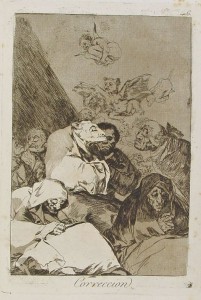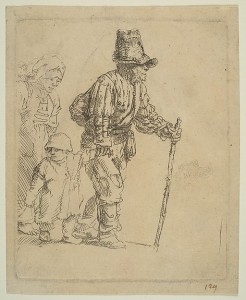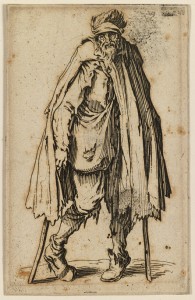What I mostly admired about Yun-Fei’s The Intimate Universe is that it triggered interesting and significant questions about a critical social issue that has been spreading around the globe: the replacement of countryside with urban areas regardless of whatever cultural values lost in process. This is a terrifying modern threat that has been progressing since early 20th-century. While I believe that the abandonment of heritage has started with Futurism, what I would like to discuss here is the responsibility of artists toward the pressing social issues they observe in society.
The local people in The Intimate Universe seemed quite alienated because they were forced to leave their only home. I heard from Katherine Alcauskaus, Collections and Exhibitions Specialist at the Wellin, that the baskets portrayed in the paintings are characterized by different weaving styles, in fact, each tribe in the Chinese countryside has its own unique style of weaving baskets, this emphasizes the richness of these people’s cultures and how pitiful it is that their heritage is being neglected as if it is not a valuable part of the country’s heritage and history. Even though people have advanced in the use of technological devices to build big cities, they are drastically ignorant when it comes to the cultural aspect. Yun-Fei was fortunate enough to be introduced to the countryside world when he was growing up, but people our age in China would not have the chance, so the government has robbed this generation of a valuable cultural experience in the name of “urbanization.” This led me to think about the significance of art and the value it gives to society.
Goya’s Caprichos also provide insightful social critique. I mostly find Correction a great representation of the delusive power of the church in the pope’s seemingly benign look.
So did Rembrandt provide remarkable social critique when he portrayed the deplorable condition of 17th-century beggars in Europe in a beautifully humane style, which we can see in Peasant Family on the Tramp, unlike his contemporaries and predecessors, like Jacques Callot, who portrayed beggars as repulsive, lacking creatures as we can see in Beggars with Crutches and Wallet . This is the artist’s responsibility toward society that has greatly diminished in the modern age.
I am mostly confused about what has changed to make art in the modern age mostly about entertainment when social problems have only increased and intensified.




I think you bring up a very good point. Do artists (and academics) have a social duty?
Lots of artists continue to make poignant social critiques through their art. However, I see what you mean. For me, a lot of contemporary artists seem to make self-referential critiques of the state of art, but ignore more compelling social issues. For example, what does this picture of dots have to say about human nature? Imo, nothing:
https://99designs-blog.imgix.net/wp-content/uploads/2013/01/7860029964_c2c39d2edb_z.jpg?format=auto
Hey Ghada,
Great article! When you ask why we focus on art dedicated to entertainment as opposed to social issues, I would argue it has a lot to do with ‘escapism’. To confront the truth is too painful. However, I think it is wrong to assume that it is an artist’s ‘responsibility’ to critique social issues. Escapism can be wonderful so long as social issues are not forgotten in the process.